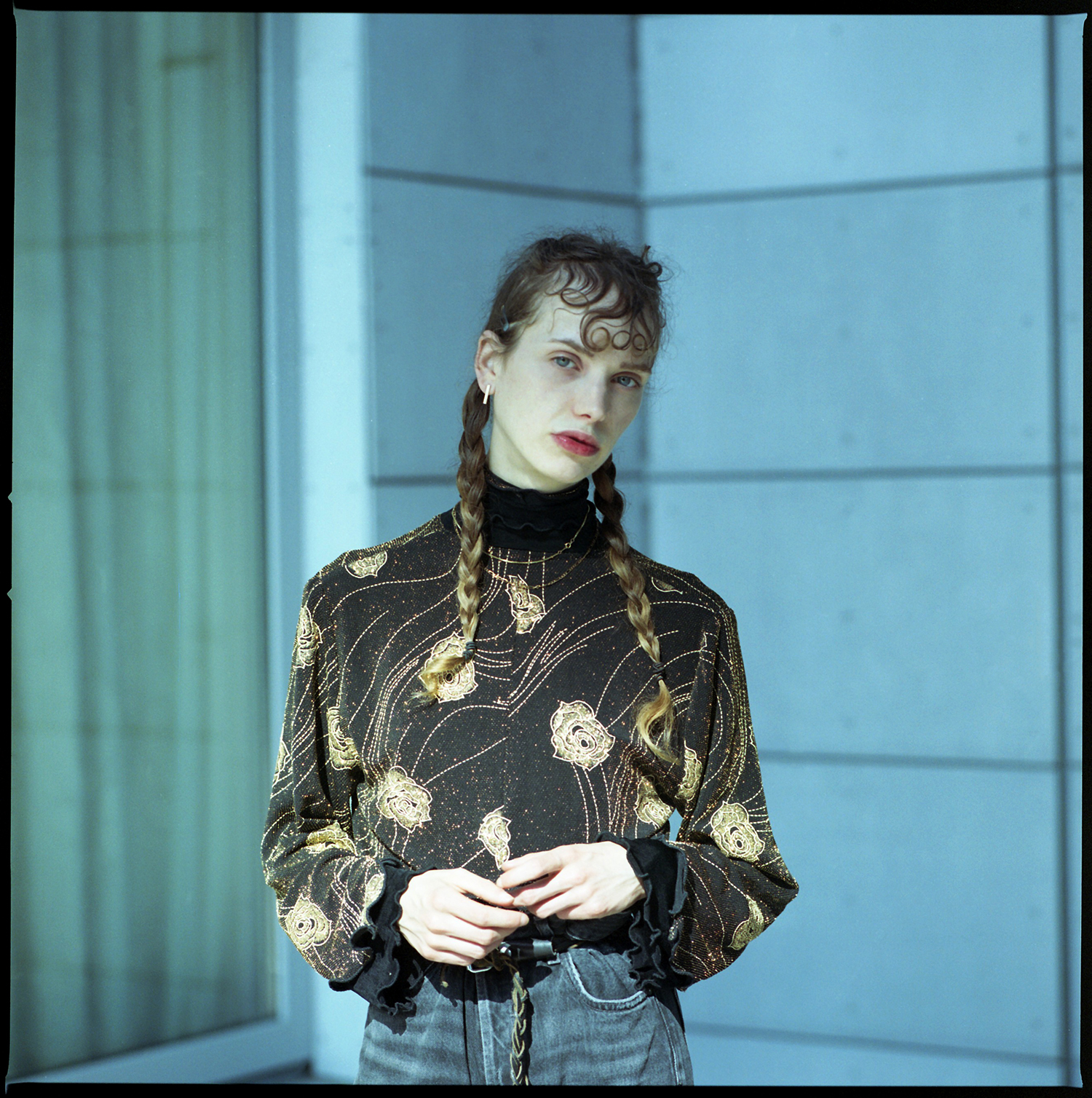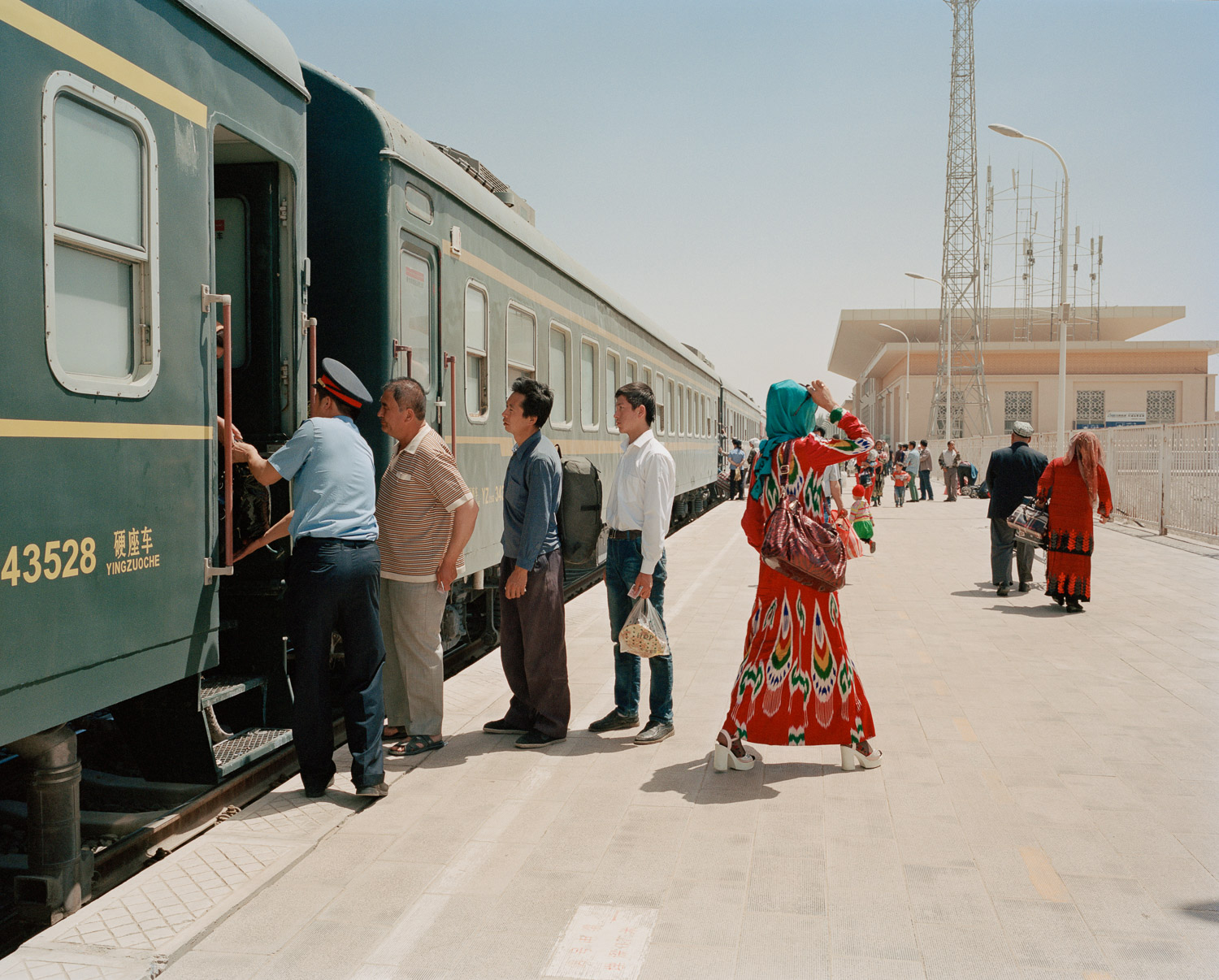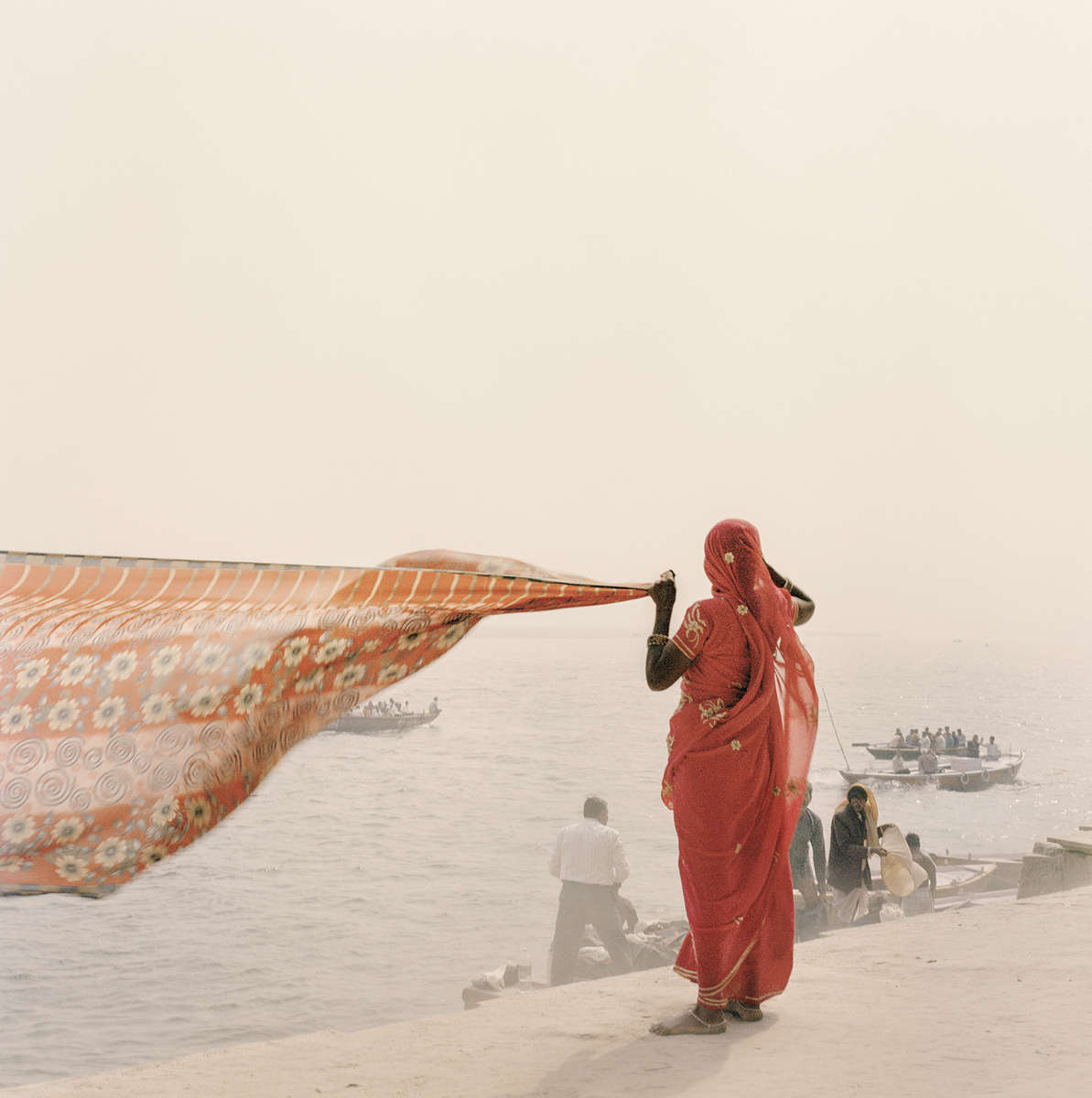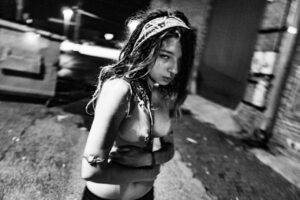
Can you tell us about your series »TULSA, OK »?
I’m a visual anthropologist currently living between San Francisco and Paris, and I recently travelled to Tulsa, this mid-size Oklahoma town made famous by Larry Clark in the 1970’s. I always brought with me my Leica, and the result is “TULSA, OK”, a book that came out on time for the 50th anniversary of Larry’s book and for the Centennial commemoration of the Tulsa Race Massacre.
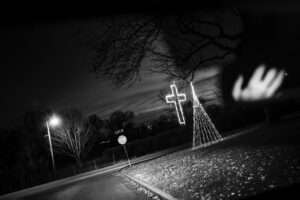
Why did you want to deal with a subject like this?
“TULSA, OK” is actually the second chapter of my Trump quadrilogy. As soon as this moron was elected in 2016, I decided to go back full time to photography and find out who these so-called “forgotten Americans” were, to try to understand why they voted for him. So I spent a lot of time in the Midwest, in the South, in the West, anywhere between the West Coast and the East Coast, in what we sometimes call (with a bit of a contempt, let’s be honest) the Rectangular States, or even the Flyover States because we usually only see them from an airplane.
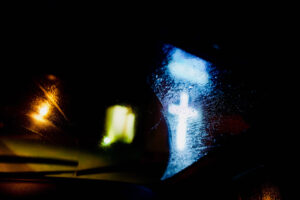
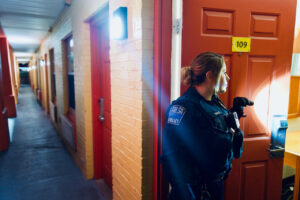
When did you start this project and how long did it last?
After finishing “PARIS, USA” in December 2017, I forced myself to stop working in small American towns for at least six months, as I was exhausted and had the feeling I was not “seeing” anything anymore. It’s only when I was ready to get back to it, in the summer of 2018, that I flew to Oklahoma for a week, to see if there was a potential for something deep and important. Timing was actually a serious constraint, because I wanted my book to come out exactly on time for the 50th anniversary of Larry Clark’s Tulsa, which was published by Ralph Gibson through his Lustrum Press imprint in 1971. And as it happens, in 1921, the population of Tulsa’s Greenwood neighborhood (also called Black Wall Street because of its relative wealth) went through the worst racial massacre since the American Civil War. It’s easy to do the math: the book had to come out in 2021. And it did, despite the Covid pandemic. I flew seven times to Tulsa, in 2018 and 2019, for a total of 45 shooting days. I took 15,000 photos, off which I selected 120. Think about it —editing a photo essay means discarding 99.2% of your work! It’s a very humbling experience. The book design was done from Lisbon by the great João Linneu in 2020. Since we couldn’t travel, we communicated mostly via FaceTime and email. In the spring of 2021 I went to Istanbul to meet with Ufuk Sahin, the master printer. And despite multiple supply chain issues and transportation bottlenecks, “TULSA, OK” was available in bookstores in Paris, Los Angeles, Tokyo and Brussels in 2021 —right on schedule!
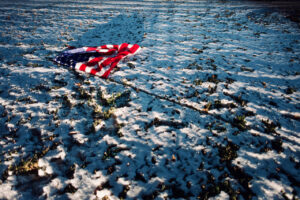
How did you manage to photograph this environment and integrate yourself into it?
One word: Julie. Or rather, two: Julie Winter. I had worked with her on a few other photo projects when she was living in California, and when she relocated to Tulsa, it was obvious to me she would be the perfect fixer. Since she might have been selling drugs on her spare time, she happened to know the right kind of people, people who live a bit off the grid, many of them mavericks, in fact just the kind of people I wanted to interview and photograph for this project. From the beginning, we agreed to focus on women, women of all origins. Larry Clark had mostly photographed his buddies, most of them young white men, so it was important to show how the rest of the population actually lived. In the book introduction, Julie describes very well the process, how we worked together and all. Between the people she personally knew and those I found on social media, I managed to interview and photograph approximately 60 women. It was a lot of work, but we did it!

Your work reminded me of Antoine d’Agata’s work. The subject is also connected to Larry Clark’s sublime and majestic work on Tulsa published in the 70s. Did you have any particular inspirations for this project?
A year after going back to photography full time, I flew from San Francisco to Bangkok to attend a workshop with Antoine d’Agata, in November 2017. And obviously, it would be hard to explore Tulsa, Oklahoma without thinking about Larry Clark’s book. Both have been an inspiration over the years. I also get inspired by other photographers, like Robert Frank (The Americans) who said: “The eye should learn to listen before it looks.” I especially like this quote because I always interview my sitters before I even take my camera out. I like Danny Lyon’s documentary photography work a lot. Actually, I ended up using one of his quotes at the beginning of my book: “You put a camera in my hand, I want to get close to people. Not just physically close, but emotionally close, all of it.” It’s all in there, for me. In terms of book design, I was very inspired by Stanley Greene’s Black Passport. It’s a marvelous book, in which the photographer (who died of viral hepatitis five years ago) mixes his personal life with his professional work. He was an outstanding story teller.
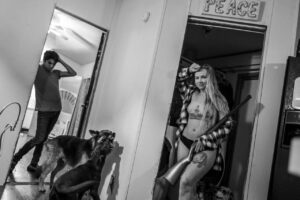
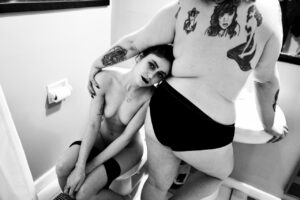
In the book, we find the stories of the protagonists of your photos and a bit of Tulsa. Why was it important for you to tell us about these women in a way other than through images?
Contrary to many photographers, I don’t think a photo tells enough of the story. So if a photo is worth 10,000 words, a photo next to 200 words might be worth 20,000 words. It’s an exponential growth in your understanding of what the author is trying to convey. While in Tulsa, I would always interview the women before taking my Leica out. It was important for me to capture everything as it really was, including their choice of words. It’s their stories, their stories of violence, addiction, rapes, hopelessness, and I am just the messenger.
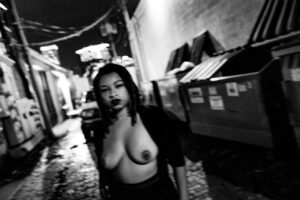
Can you choose a photo and tell us its story?
The cover photo has an interesting story, for a couple of reasons. The first one is the most obvious: here I am in a seedy bar in Tulsa, Oklahoma, late at night, in the women’s toilets, taking photos of two babes doing lines of cocaine with my American Express card. That’s already quite good, isn’t it?
But the other interesting part is how this picture was edited to be on the final cover. An initial cover project showed red squiggles on the woman’s nipples to make fun of the curent social media puritanical censorship.
But then João Linneu, the book designer, cropped it (gasp!) and had it printed on some very special paper, thus producing an intriguing and mysterious look. The result is quite stunning, really. Incidentally, he designs most (if not all) of Antoine d’Agata’s books.
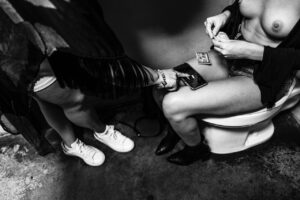
How did you know that the project was ending?
When you realize you’re more or less taking the same photo over and over again, when you have the feeling that what you are doing is not bringing significant added value, when you even start getting bored doing it but you keep doing it because it’s easy, then it’s time to go home.
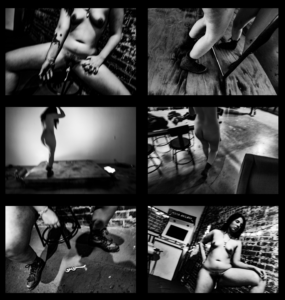
Do you currently have any other projects underway?
The first project I did after going back to photography full time was “PARIS, USA”. It’s not a book (yet), but it was published as a photo essay in GEO and a few other magazines. It was also exhibited for four months in Paris (the one in France!). My second project, “TULSA, OK” was published right on schedule, in 2021. And later this year, in the fall of 2022, I will launch “CODE RED”, a visual anthropology essay about menstruation. And there is more to come. Much more…

Your top 5 photo books?
There are 10 books on my desk right now:
Anticorps / Antibodies – Antoine d’Agata
Black Passport – Stanley Greene
Gypsies – Josef Koudelka
Pictures from the New World – Danny Lyon
Conversations with the Dead – Danny Lyon
The Book of Everything – Mary Ellen Mark
Ward 81 – Mary Ellen Mark
Minamata – William Eugene Smith
Worlds in a Small Room – Irving Penn
The Americans – Robert Frank
Tulsa – Larry Clark
[That’s 11? So be it.]
Interview by Valentine Zeler
Photographer’s links: website – Instagram


